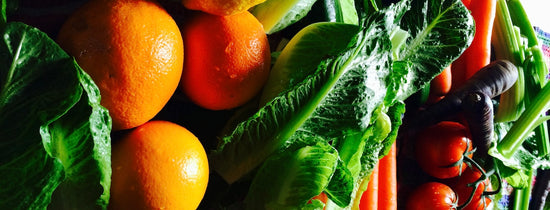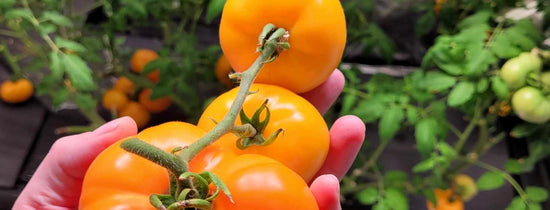Winter is in full swing and, that time where gardeners of all skill levels are preparing their indoor and outdoor gardens to grow food in for another bountiful season is here!

Growing your own food is extremely rewarding and I cannot think of anything better than biting into food that you have grown yourself. One of life’s magical pleasures for sure.
However, getting ahead of the season isn’t as easy. Especially if you are germinating your varieties from seed seedlings also require delicate care and their feeding requirements are much less than full size plants that’s why we have put together a feeding guide for you so you know what the low range of food is for each one of the listed crops.
Can I Start Seeds Indoors And Then Plant Them Outdoors?
Yes! This is another tip we offer to outdoor gardeners wishing for a booming start with their tomatoes, start them inside! Start them now and when the season begins you’ll be able to transplant your seedlings into a larger pot or garden patch with much better Vigor, almost always guaranteeing a successful and monstrous crop.

What If I’m Growing Food from a Cutting?
If you are, that’s great you’re many steps ahead which means you can start feeding your plants a mid-strength nutrient solution from the get go! For example if the required feeding range is 0.8-1.8 I personally would start feeding them 1.2 EC and build up the concentration of food as the plant becomes larger or shows signs of deficiency.
A-Grade Hydroponics pH & EC Hydroponic Feeding Ranges for Common Vegetable Crops
The pH ranges listed below are specific to hydroponic growing. A-Grade Hydroponics have grown nearly everything indoors so this is a modified version of our experiences.
The EC ranges listed below are also specific to hydroponic growing, remember feeding is relative to the size and growth rate of the specific plant, so when a plant is only 5cm in height we would not feed the high range.
|
CROP TYPE
|
IDEAL PH RANGE |
IDEAL EC RANGE
|
DIFFICULTY
|
|
Artichoke
|
6.2-7.5
|
0.8-1.8
|
MEDIUM
|
|
Asparagus
|
5.8-6.8
|
1.2-2.0
|
HARD
|
|
Bean
|
5.8-6.5
|
1.2-2.4
|
EASY
|
|
Beetroot
|
5.8-6.5
|
1.1-2.4
|
EASY
|
|
Broad Bean
|
5.7-6.4
|
0.8-2.4
|
EASY
|
|
Broccoli
|
6.0-7.0
|
1.2-3.5
|
MEDIUM
|
|
Brussel Sprouts
|
6.0-6.5
|
2.0-3.0
|
MEDIUM
|
|
Cabbage
|
6.5-7.2
|
1.2-2.8
|
MEDIUM
|
|
Capsicum
|
5.5-6.5
|
0.8-2.8
|
EASY
|
|
Carrots
|
5.8-6.5
|
1.6-2.2
|
EASY
|
|
Cauliflower
|
6.0-6.8
|
1.2-1.8
|
MEDIUM
|
|
Celery
|
5.5-6.5
|
0.8-1.6
|
MEDIUM
|
|
Corn
|
5.8-6.5
|
1.7-2.5
|
MEDIUM
|
|
Cucumber
|
5.5-6.5
|
1.2-2.5
|
EASY
|
|
Eggplant
|
5.6-6.5
|
1.2-2.7
|
EASY
|
|
Garlic
|
5.5-6.2
|
1.4-1.8
|
EASY
|
|
Leek
|
6.0-7.0
|
1.2-1.8
|
MEDIUM
|
|
Lettuce
|
5.7-6.7
|
0.8-1.6
|
EASY
|
|
Okra
|
6.5-7.5
|
0.8-1.7
|
MEDIUM
|
|
Onion
|
5.6-6.6
|
1.4-1.8
|
EASY
|
|
Pak Choi
|
5.5-6.5
|
1.5-2.0
|
EASY
|
|
Parsnip
|
5.5-6.2
|
1.5-2.0
|
MEDIUM
|
|
Pea
|
5.5-6.5
|
1.2-2.4
|
EASY
|
|
Potatoes
|
5.2-6.8
|
1.6-2.5
|
EASY
|
|
Pumpkin
|
5.5-7.0
|
1.8-2.4
|
EASY
|
|
Radish
|
5.8-6.8
|
1.2-1.8
|
MEDIUM
|
|
Spinach
|
5.5-6.5
|
1.6-2.4
|
EASY
|
|
Silverbeet
|
5.6-7.2
|
1.2-2.2
|
EASY
|
|
Tomatoes
|
5.5-6.5
|
1.2-4.2
|
EASY
|
|
Turnip
|
5.5-6.5
|
1.1-2.2
|
MEDIUM
|
|
Zucchini
|
6.0-7.0
|
1.8-2.4
|
EASY
|
If you find fluctuations with your pH and EC and can’t understand why here are some helpful tips.
If the pH of your nutrient solution rises then the plants are consuming food.
If EC of your nutrient solution rises then the plants are only drinking water.
In most cases we naturally want the pH to rise and the EC to reduce as this explains normal consumption as the plants cycle through (see-saw) what food is left in solution.
It is possible in a recirculating system such as an ORIGIN Dripper system or a DWC (Deep water Culture) system to find a ‘sweet spot’ by which the pH & EC values remain the same and the water level is the only thing that changes, it’s great when this happens but it is not a realistic goal as most systems behave more like the above mentioned see-saw whereby the root-zone is cycling through what’s available and then the grower tops up the system or tank with fresh food each week or whenever is needed based on plant size and quantity.

If you are overwhelmed with the information in this blog post, don’t be, this is just our way of giving you lots of information especially if you are the type of grower that needs it, if you don’t come in and have a chat to our friendly staff at our Hydroponics shop in Cheltenham, Melbourne as we can talk about how to grow food all day long. For those growing culinary herbs or medicinal herbs wanting the same kind of information please comment below and we will reply to your questions, we will happily do another tutorial on how to feed different types of herbs if you all want it. What do you think of this blog? Comments Below.







